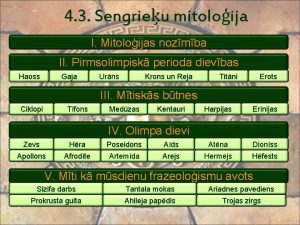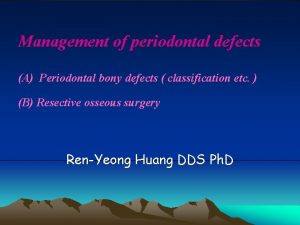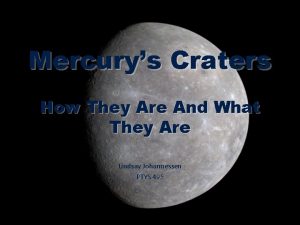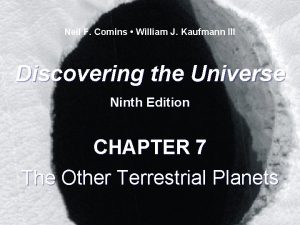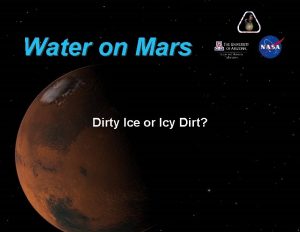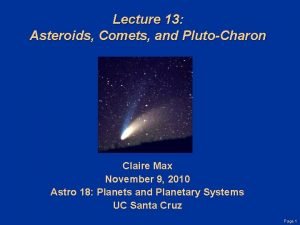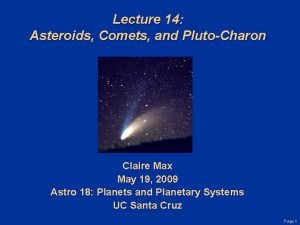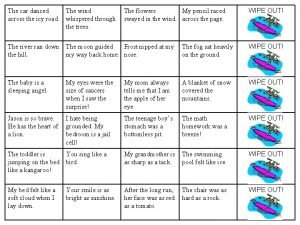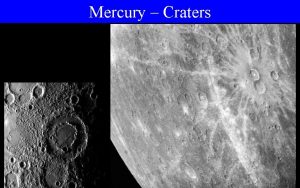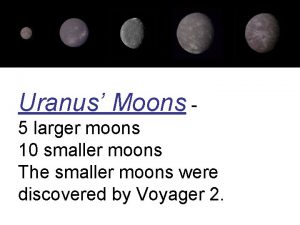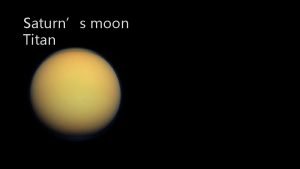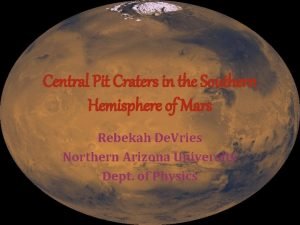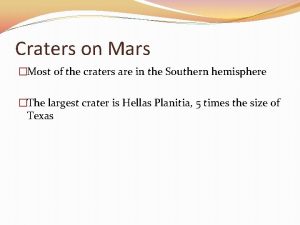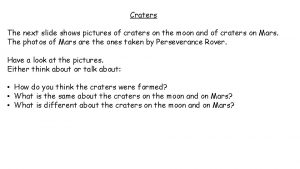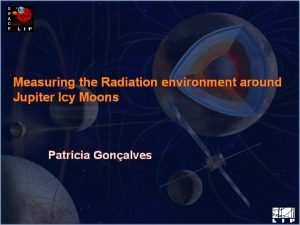Central Pit Craters on Saturns Icy Moons Sierra











- Slides: 11

Central Pit Craters on Saturn’s Icy Moons Sierra Ferguson Mentor: Dr. Nadine Barlow Northern Arizona University

Introduction Mars g=3. 711 m/s^2 d=6, 799 km Ganymede g=1. 428 m/s^2 d=5, 268 km

Introduction Rhea Dione Tethys g=0. 147 m/s^2 d=1, 066 km g=0. 233 m/s^2 d=1, 123 km g=0. 265 m/s^2 d=1, 528 km 40 km 36 km 250 km

Formation Models Melt-Drainage of Subsurface Ice Collapse of Weakened Material � Impactor hits icy surface � Crater originally has a peak � Heat from impact melts the ice and leaves a Another model suggests that the collapse is from the weaker surface material � Weaker peak material collapses to form a pit (Senft and Stewart, 2011)

Data �

Analysis Pit vs. Crater Diameter 30 25 Pit Diameter (km) R 2 = 0, 8679 20 15 10 5 0 0 10 20 30 40 50 60 70 80 Crater Diameter (km) Dione Ganymede (Alzate and Barlow, 2011)

Results Comparison of Crater Diameters vs Pit Diameters 70 60 Pit Diameter (km) 50 40 Rhea Dione 30 Tethys 20 10 0 0 50 100 150 Crater Diameter (km) 200 250

Results Moon Surface Gravity (m/s 2) # of pits Dp/Dc median Crater value diameter ranges (km) Pit Diameter ranges (km) Tethys 0. 147 13 0. 175 20 -60 3 -12 Dione 0. 233 12 0. 21 20 -80 3 -25 Rhea 0. 265 12 0. 22 20 -80 10 -20 Ganymede 1. 428 471 0. 19 10 -90 4 -43 Mars 3. 711 1604 0. 13 5 -90 2 -23

Conclusions �As crater diameters increase, pits increase as well �No indication that latitude and pit distribution are related �Fewer pits found on smaller bodies �More pits were seen at smaller crater diameters �Larger Dp/Dc ratios support the melt drainage model Rhea: 0. 22 Dione: 0. 21 Tethys: 0. 17

Future Work �Results will be incorporated into a larger survey of central pit craters throughout the solar system including : Mercury, Mars, Ganymede, Callisto, and the moon �Results will be used to further constrain the formation models for central pits

Acknowledgements �Dr. Barlow �Kathleen Stigmon �NAU/NASA Space Grant �NAU � ASU �JMars �Cassini team
